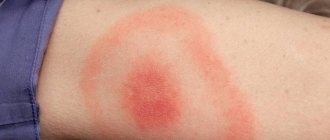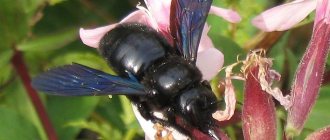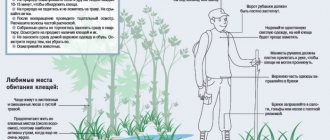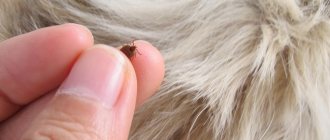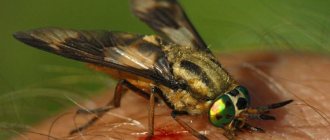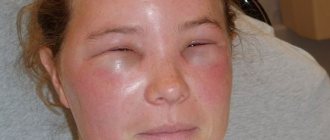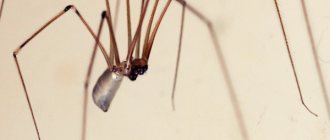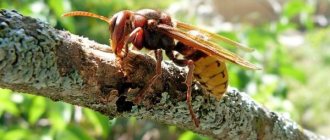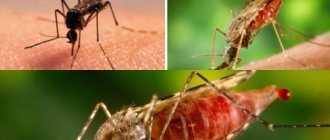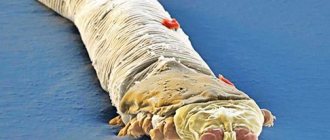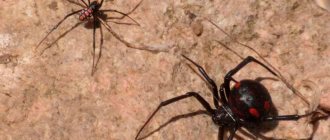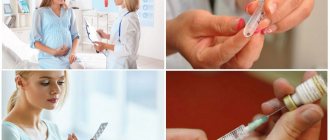Bees in nature are active pollinators of plants, and their benefits cannot be overestimated. However, in addition to obtaining a unique natural product, which is honey, these little workers provide a person with many more healing components in the course of their existence. Literally everything that concerns bees to some extent can be used for medicinal purposes: propolis, wax, beebread, royal jelly, zabrus, deadwood, poison and even bee moths.
Therefore, since man began to use honey and raise bees, there has been treatment with bees - apitherapy. And although this term applies to absolutely all beekeeping products, it is often used when referring to bee stings.
Bee venom: benefits and harms
To protect its life and the life of its family, each working individual has a sting and a sac of poison connected to it - a transparent yellowish liquid with a specific taste and smell. Since the poison has a high solids content (up to 40%), it dries quickly in air. However, this same property gives it a long lasting effect.
Bee venom can be a medicine in skillful hands due to its rich composition:
- Pheromones;
- Proteins (enzymes);
- Peptides;
- Biologically active amines (including histamine);
- Sahara;
- Lipids;
- Amino acids;
- Minerals: carbon, nitrogen, hydrogen, magnesium, calcium, phosphorus, copper, etc.
The main part of the poison is represented by enzymes and peptides. It is these two groups that play a decisive role in influencing the human body.
The most important components of apitoxin (bee venom) are:
- Cardiopeptide – stabilizes the cardiovascular system;
- Adolapine – has an analgesic effect;
- Melitin – has anti-inflammatory and antibacterial effects;
- Apamin – stimulates the nervous system, normalizes metabolism. Prevents a decrease in blood clotting;
- Histamine and acids - dilate blood vessels, lower blood pressure.
All these properties make it possible to use bee venom in the treatment of a number of diseases: gout, neuritis, arthritis, neuralgia, osteochondrosis, vertebral hernia, radiculitis, arrhythmia, angina pectoris, varicose veins, thrombophlebitis, chronic bronchitis and even bronchial asthma. Positive results have been obtained using apitoxin in the treatment of patients after stroke and paralysis.
The effect of beneficial substances in bee venom is inseparable from the influence of the harmful components it contains. Therefore, in some cases, treatment with apitoxin is prohibited. Contraindications to bee stinging are:
- Allergy. And not only for bee venom, but also for other bee products;
- Pregnancy or lactation period;
- Oncological diseases;
- Acute form of the disease or exacerbation of a chronic one;
- Infectious diseases, as well as conditions with increased t;
- Poor blood clotting;
- Ages up to 14 years, when the immune system is not yet fully formed;
- Pathological conditions of the liver, kidneys, as well as tuberculosis.
Important! Depending on the doses used and the sting points, the effect of bee venom can be therapeutic or poisonous. That is why treatment with bee stings should be carried out with the assistance of a specially trained apitherapist. In this case, the benefit of a bee sting will be the result of a precisely calculated effect.
Application in cosmetology
Some substances that make up wasp venom have antiseptic, bactericidal, anti-inflammatory, and analgesic effects. The components promote skin rejuvenation, smoothing out wrinkles and restoring the natural epithelial layer. Despite the fact that a wasp sting is harmful to humans, the beneficial properties after processing the poison are actively used in cosmetology.
A properly processed composition of the wasp's biological secretion acts like Botox . Being a natural component, it does not have a chemical effect on the skin, due to which wrinkles are effectively eliminated and the skin maintains a fresh, healthy appearance.
In modern cosmetology, many drugs have been developed that have a beneficial effect on the skin. Therefore, wasp venom can have both detrimental and positive effects on the human body.
Treatment with bee stings
Bee therapy as a method of getting rid of various diseases has been used by humans since ancient times. Over the course of many decades, various schemes and techniques have been developed to achieve exceptional results in the treatment of a number of serious diseases.
The general scheme for using bee venom live is as follows:
- Carrying out a bioassay - a sting is made in the lumbar region, after which the patient is observed for an hour. In the absence of a negative reaction, treatment is continued;
- A detailed laboratory examination of the patient’s blood and urine can first be carried out, after which a bioassay is carried out;
- Bee stinging is used at biologically active points by analogy with acupuncture. The bee is applied to the desired point, while the sting is directed directly to the affected area. After the bite, the insect is removed, but the reservoir of poison attached to the sting remains in the body for another 5-10 minutes.
Important! The scheme for using bee stinging may differ in each specific case and depend on the condition of the patient and the area in need of treatment.
What not to do when a wasp appears?
Sometimes the increased aggression of these insects is partly a consequence of improper human behavior. The worst thing you can do is try to swat the wasp on yourself (or others) . In this case, a wasp bite (stinging) is practically unavoidable. She will do this automatically. How to be? If a wasp lands on the body, you need to brush it off, but under no circumstances try to kill it. It is much safer to drive it away and move some distance away from the object that attracted the insect.
Also, do not run or try to brush the insect off with your hands . It is better to drive away the aggressor using improvised means. For example, a newspaper or any other items that are suitable for this and are at hand.
If there are no wasp attacks, she behaves calmly, exploring the surrounding area, then you should not anger or disturb her. Perhaps she will fly further unhindered as soon as she realizes that there is nothing interesting for her here. If the insect has entered the room and is quite peaceful, then you can carefully catch it in a plastic bag and then get rid of it. You can’t leave it in the bag, because... she will easily gnaw through it and fly out again .
Apitherapy: sting points
Bee therapy has been used in most cases to treat sciatica. Stinging in the lower back invariably caused a positive result and was very popular among the people. It was only in the middle of the last century that a general scheme for treating bee stings was developed. Since then, this technique has been successfully used, providing a general healing effect on the central nervous system, metabolism (adrenal glands, hypothalamus, pituitary gland), as well as stimulating the immune system.
According to this scheme:
- Bee stinging is carried out for 10 days, increasing the number of stings by 1 every day: on day 1 - 1 sting, on day 2 - 2, etc.;
- For bites, the author (N.P. Ioirish) recommends choosing the outer areas of the upper and lower extremities (hips and shoulders);
- The bites are placed in a certain order: left shoulder, right shoulder, right thigh, left thigh. Then repeat.
Thus, repetition of stings in one place occurs only after 3 days, and the bite is not placed in the same place. When 10 days are completed, take a break of 3-4 days, and then continue for another 45 days. with daily stings by 3 bees. Sometimes in sanatorium conditions the duration of treatment is reduced, while maintaining the number of bites. However, in this case, the likelihood of apitoxin intolerance increases.
Important! There are other treatment regimens, but the most correct solution would be to select an individual technique with the help of a qualified specialist trained in apitherapy.
What not to do
Try, if possible, not to scratch or rub your eyes, otherwise the infection will get into the wound, swelling, and itching will intensify. You'll have to suffer a little.
Find out more How dangerous are gadfly bites?
As with all types of wounds, you should not use brilliant green or alcohol. Treatment with alcohol-containing solutions is only possible around an open wound.
Do not heat the wound or treat the skin with household chemicals. Do not heat the area of swelling or apply warm compresses to it - this will worsen the condition. Don't take a bath, limit yourself to a shower.
If swelling quickly increases, affecting the face, neck, mucous membranes, immediately call emergency medical help.
For eyes
To reduce itching, it is not recommended to use hormonal ointments. You should not start taking antibiotics without a doctor's prescription. It is strictly not recommended to use alcohol-based preparations, hydrogen peroxide or table vinegar. These remedies are suitable for bites on the body, not the eyes!
Treatment of multiple sclerosis with bees
Multiple sclerosis is a progressive disease of the nervous system in which nerve cells are replaced by connective tissue. In other words, the nervous system loses its functions. Characteristic signs of the disease are:
- Sensory disturbance: tingling or numbness;
- Loss of coordination;
- Tension in the arms or legs, sometimes paralysis;
- Decreased visual acuity: both central and peripheral;
- Nystagmus (involuntary movements of the eyeballs);
- Damage to the facial nerve.
The initial symptoms of the disease may be constant fatigue, excessive anxiety or euphoria, a feeling of “electric current passing” along the spine, as well as an increase in symptoms after a hot meal or bath.
Both abroad and in our country, treatment of this serious irreversible disease with the help of bee stings is practiced. And although many “craftsmen” try to practice bee stinging, such a serious pathology as atherosclerosis should undoubtedly be treated only with the assistance of a qualified specialist. Fortunately, in recent years, attention to apitherapy has increased, and now even some medical institutes are training specialized doctors.
Important! Like any disease, multiple sclerosis is best treated in its early stages. Therefore, if symptoms are detected, it is necessary to undergo an examination and only then begin apitherapy.
How to remove swelling
Swelling is one of the main symptoms of multiple midge bites. It is usually persistent, causing discomfort and constant itching. Sometimes it spreads to areas of the body remote from the bite site - head, neck, face. It can be removed using:
- Local application of hormonal ointments with a decongestant effect (hydrocortisone, sinaflan, trimistin, triderm, kremgen) Apply a thin layer 2-3 times a day;
- Antiallergic drugs – fenistil gel, cynovit cream;
- Taking antihistamines - tavegil, loratadine, claritin, L-cet, diazolin;
- Glucocorticoids: methylprednisolone, hydrocortisone, dexamethasone;
- Decongestants (L-lysine aescinate, furosemide).
In case of fulminant swelling similar to an anaphylactic reaction spreading to the neck and respiratory organs, you should immediately seek medical help.
Treatment of varicose veins with bees
Varicose veins develop as a result of their loss of elasticity. As a result, stretch marks and knots begin to form on them, blood circulates in the affected areas at a lower speed and the risk of blood clots increases.
The first sign of the disease is the appearance of subcutaneous nodes or dilated veins, which are clearly visible to the naked eye. Later, as the disease progresses, dark spots appear on the affected areas, which can transform into ulcers. The pathological condition is accompanied by the appearance of edema, a feeling of heaviness in the legs, and rapid fatigue. At the first symptoms, increased attention should be paid to prevention: restore normal blood circulation with walks or regular exercise (with a sedentary lifestyle).
When treating varicose veins with bee stings, it is recommended to conduct sessions with stings placed in the most painful areas: nodes and dilated veins. The substances contained in apitoxin stimulate blood thinning and strengthening of vascular walls, resulting in the restoration of normal blood circulation.
Treatment is carried out according to an individual scheme with a gradual increase in the strength of the effect. The entire course requires an average of 150-200 bees. The bite is not placed in the same place. If even the slightest signs of intolerance appear, treatment is stopped.
Important! Apitherapy at home is possible only after preliminary research and detailed consultation with an apitherapist.
Effect on the body
Norepinephrine slows down the circulatory system, which prevents the rapid dilution of the toxic substance and washing of the affected area. The main danger is that the bitten person does not know what reaction to the toxic substances will occur.
If you do not treat the affected area of skin in time, you may notice a characteristic reaction.:
To prevent dangerous consequences, the place where the sting was inserted must be quickly processed. In addition to washing, it is advisable to take antihistamines so that the wasp venom is diluted and reduces its harmful effects.
The effect of the poisonous secretion depends on the individual characteristics of the victim. Therefore, if it is unknown whether he is allergic to the components of the wasp secretion, he should be taken to a medical facility as soon as possible.
Peptides
For our body, these substances are information carriers. By transmitting information from cell to cell, they ensure the proper functioning of processes in the body . If any cell fails, disease will begin.
If peptides are introduced into the body, they trigger the process of self-healing. In other words, restoration of the diseased organ begins due to the normalization of its function at the cellular level.
This happens without chemical or surgical intervention.
Serotonin
Thanks to this hormone, areas in the anterior lobe of the brain responsible for cognitive processes are activated.
An increase in muscle tone and motor function occurs when this hormone penetrates the spinal cord.
With a lack of serotonin in the cerebral cortex, a person becomes depressed. It’s not for nothing that this hormone is called the hormone of happiness.
Hernia treatment with bees
If it is possible to treat varicose veins or mild radiculitis on your own, then treating an intervertebral hernia is entirely the prerogative of a specialist. Moreover, to achieve effectiveness, it is recommended to use bee stinging in combination with other methods: medications, physical therapy.
Thanks to the stimulating, antispasmodic, anti-inflammatory effect of apitoxin, swelling and pain are reduced. And improved blood circulation increases tissue metabolism, which leads to restoration of firmness and elasticity in them.
The procedure takes place after a preliminary examination of the patient in the following order:
- The patient releases the upper body and lies on his stomach;
- The doctor treats the problem area with alcohol, after which he takes the bee with tweezers and applies it to the indicated area;
- The sting is left in the body for up to 10 minutes. , after which it is removed and the bite site is treated with hydrocortisone ointment;
- After the procedure, it is recommended to lie down for another 20 minutes to feel the beginning of the therapeutic effect.
Delivery of apitoxin to painful points can occur in other ways:
- Phonophoresis, electrophoresis, ultrasound. The procedures are carried out in courses over 1.5-2 weeks, from 10 to 15 minutes. the disadvantage of the methods is the impossibility of precise dosing of apitoxin;
- Injections "Apifor". In this case, the dosage is accurate, but the pain is much stronger than with a bee sting.
Important! Bee therapy is incompatible with drinking alcoholic beverages and heavy physical activity. It is also recommended to follow a certain diet, with a predominance of plant and dairy products.
Danger signs
Signs of anaphylactic shock
Two percent of people are hypersensitive to bee venom. For them, an encounter with a bee is extremely dangerous, but wasp toxins do not cause a violent reaction or anaphylactic shock.
If an allergic person is bitten by a bee, then you should immediately take a double dose of an antihistamine and take the victim to the clinic without waiting for negative symptoms to appear.
Pay attention to dangerous clinical manifestations:
- rapidly developing swelling and hyperemia;
- shortness of breath, lack of air, respiratory failure;
- lowering blood pressure;
- changes in heart rhythm;
- nausea, dizziness, vomiting;
- severe weakness, loss of strength;
- coldness of extremities, cold sweat;
- panic, fear of death;
- faintness or loss of consciousness.
Other apitherapy products
In addition to bee venom, other waste products of bees are successfully used in bee treatment:
- Honey. A unique natural product containing up to 300 components. Moreover, they are all extremely useful: sugars, enzymes, amino acids, vitamins, organic and inorganic amino acids, minerals. Honey has virtually no contraindications and is used in dietary and therapeutic nutrition because it has antibacterial, anti-inflammatory, and immunostimulating properties. For oral administration, the recommended dose is 60 g (no more than 100 g per day), divided into 2-3 doses. Honey should not be placed in boiling water, but rather kept in the mouth until completely dissolved;
- Pollen. The main property is to cleanse the body of waste and toxins, which is especially useful for residents of megacities. In addition, pollen has regenerating qualities, improves blood composition and has a beneficial effect on the endocrine and nervous systems;
- Propolis (bee glue). It is produced by bees from resinous substances of plant origin, mainly birch and poplar. The bees collect it and expose it to their enzymes. Propolis has strong antimicrobial properties, which is why it is used in the form of tinctures, ointments, and rinses in the treatment of many diseases. In addition, it stimulates the immune system, relieves pain and relieves inflammation;
- Wax. It is a product of special wax bee glands. Used as an additive in creams, ointments, suppositories, it has regenerating and restorative properties;
- Royal jelly. A special substance that nurse bees secrete when raising the queen bee. It is one of the most valuable bee products: it normalizes metabolism, exhibits an antioxidant effect, improves endurance under any overload (physical and psychological), accelerates the elimination of toxins;
- Podmore. Bees, even after their death, continue to provide benefits. Dead bees dried and ground in a coffee grinder are used to prepare tinctures and ointments, and taken orally in their pure form. The substances contained in the chitinous cover of the bee are the strongest biostimulants, therefore they can cure the most severe diseases.
Important! In addition, other bee products also have medicinal properties: bee bread, bee brood, brood, wax moth. As well as all their derivatives.
If you look at the reviews of bee treatments, you will see a lot of evidence of truly miraculous healings. The power of beekeeping products in improving the health of the body is also evidenced by the fact that up to 80% of beekeepers are long-lived. There is even a common belief that even the air in the apiary is healing. Therefore, even if you are not able to maintain a large apiary, if possible, get yourself at least a few hives - for your health.
Features of bee stinging
When prescribing a course of treatment, the doctor must take into account not only the condition of his patient, but also the age of the bee, which directly affects the composition of its venom. In medicine, there are specially developed methods that make it possible to understand what dose of poison is indicated for a patient of a given age suffering from a specific disease.
Help for people with increased allergic reactions
Allergy sufferers, while on vacation, should always be prepared to encounter insects and know the consequences that insect bites will bring them. Must be able to perform basic assisting techniques. If you are allergic to a wasp sting, be alert. Literally, every allergy sufferer should carry with them a first aid kit with a specific set of medications.
The basis of such a first aid kit should be antiallergic (antihistamine) drugs. People with asthma should carry an inhaler with them. After all, its timely use eliminates the occurrence of asthma attacks. Those suffering from heart disease and related diseases should carry cardiac medications with them. A tourniquet is also a must in the first aid kit. If a leg or arm is affected, a tourniquet will act much more effectively as a stopper to harmful toxins than a tight bandage. Allergy sufferers should clearly know the symptoms of allergies. After a bite, you should immediately consult a doctor. After all, medical care is always better than self-medication.
